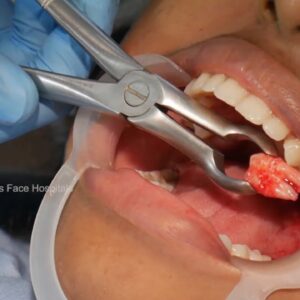
Wisdom teeth may not need to be removed if they are:
•Healthy
•Grown in completely (fully erupted)
•Positioned correctly and biting properly with their opposite teeth
•Able to be cleaned as part of daily hygiene practices
Many times, however, wisdom teeth — the third molars in the very back of your mouth — don’t have room to grow properly and can cause problems. Erupting wisdom teeth can grow at various angles in the jaw, sometimes even horizontally.
Sometimes wisdom teeth only partially emerge through the gums. Other times, they remain completely hidden. Wisdom teeth that aren’t able to emerge normally become impacted, or trapped, within your jaw.
If the wisdom teeth emerge partially through the gums, a passageway is created, which can cause problems. And because this area is hard to see and clean, it can become a magnet for bacteria that cause gum disease and oral infection.
Some dentists recommend removing wisdom teeth if they don’t fully emerge or if they grow near the nerve of the lower jaw. Many dentists believe it’s better to remove wisdom teeth before the roots are fully formed, when someone is younger and more likely to recover faster from surgery. This is why some young adults have their wisdom teeth pulled before the teeth cause problems and become more firmly rooted in the jaw.
According to the American Dental Association, wisdom teeth removal may be necessary if you experience changes in the area of those teeth, such as:
• Pain
• Repeated infection of soft tissue behind the lower last tooth
• Cysts (fluid-filled sacs)
• Tumors
• Damage to nearby teeth
• Gum disease
• Extensive tooth decay
The decision to remove wisdom teeth isn’t always clear. Talk to your dentist or an oral surgeon about the position and health of your wisdom teeth and what’s best for your situation.

 Impacted wisdom teeth fall into one of several categories:
Impacted wisdom teeth fall into one of several categories:
– Mesioangular impaction is the most common form (44%), and means the tooth is angled forward, towards the front of the mouth.
– Vertical impaction (38%) occurs when the formed tooth does not erupt fully through the gum line.
– Distoangular impaction (6%) means the tooth is angled backward, towards the rear of the mouth.
– Horizontal impaction (3%) is the least common form, which occurs when the tooth is angled fully ninety degrees sideways, growing into the roots of the second molar.
